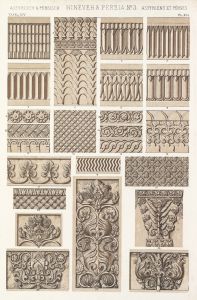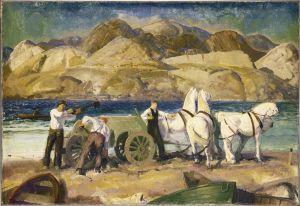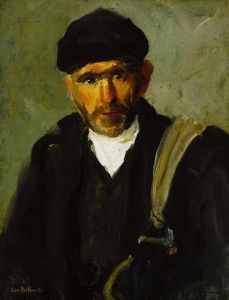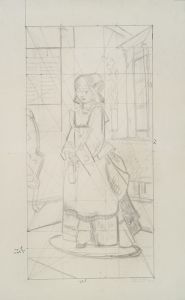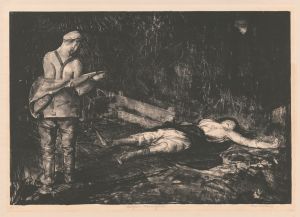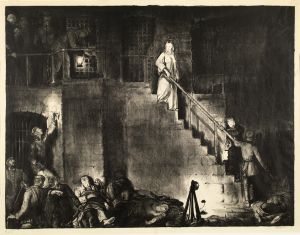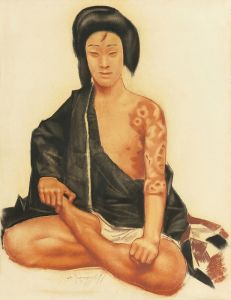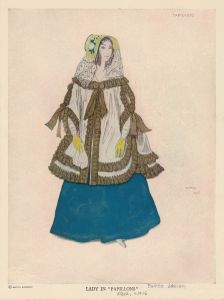
Anne with a Japanese Parasol
A hand-painted replica of George Wesley Bellows’s masterpiece Anne with a Japanese Parasol, meticulously crafted by professional artists to capture the true essence of the original. Each piece is created with museum-quality canvas and rare mineral pigments, carefully painted by experienced artists with delicate brushstrokes and rich, layered colors to perfectly recreate the texture of the original artwork. Unlike machine-printed reproductions, this hand-painted version brings the painting to life, infused with the artist’s emotions and skill in every stroke. Whether for personal collection or home decoration, it instantly elevates the artistic atmosphere of any space.
"Anne with a Japanese Parasol" is a painting by the American artist George Wesley Bellows (1882–1925), a prominent figure in the Ashcan School of art. Bellows is widely recognized for his dynamic depictions of urban life, portraits, and landscapes, as well as his innovative use of color and form. This particular work, completed in 1917, showcases Bellows' exploration of portraiture and his interest in incorporating elements of international influence into his art.
The painting depicts a young woman, identified as Anne, holding a Japanese parasol. She is seated in a relaxed pose, with the parasol positioned behind her, creating a striking visual contrast between her figure and the intricate patterns of the parasol. The composition reflects Bellows' skill in blending realism with a sense of modernist experimentation. The use of the Japanese parasol as a central element in the painting demonstrates Bellows' engagement with the broader cultural fascination with Japonisme, a trend that influenced many Western artists during the late 19th and early 20th centuries.
Bellows' use of color in "Anne with a Japanese Parasol" is particularly notable. The vibrant hues of the parasol and the subtle tones of Anne's clothing and skin create a harmonious balance, drawing the viewer's attention to the interplay of light and shadow. This attention to detail and texture highlights Bellows' mastery of oil painting and his ability to convey depth and emotion through his work.
The identity of Anne, the subject of the painting, is not definitively documented, but she is believed to have been a model or acquaintance of the artist. The painting is often celebrated for its intimate and contemplative atmosphere, which contrasts with the more energetic and bustling scenes for which Bellows is best known, such as his depictions of New York City and boxing matches.
"Anne with a Japanese Parasol" is part of the collection of the Columbus Museum of Art in Columbus, Ohio. The museum holds a significant number of works by Bellows, who was born and raised in Columbus. This connection to his hometown has made the museum an important repository for his art and a key institution for the study of his career.
The painting remains an example of Bellows' versatility as an artist and his ability to draw inspiration from diverse cultural sources while maintaining a distinctly American perspective. It continues to be appreciated for its aesthetic qualities and its place within the broader context of early 20th-century American art.





